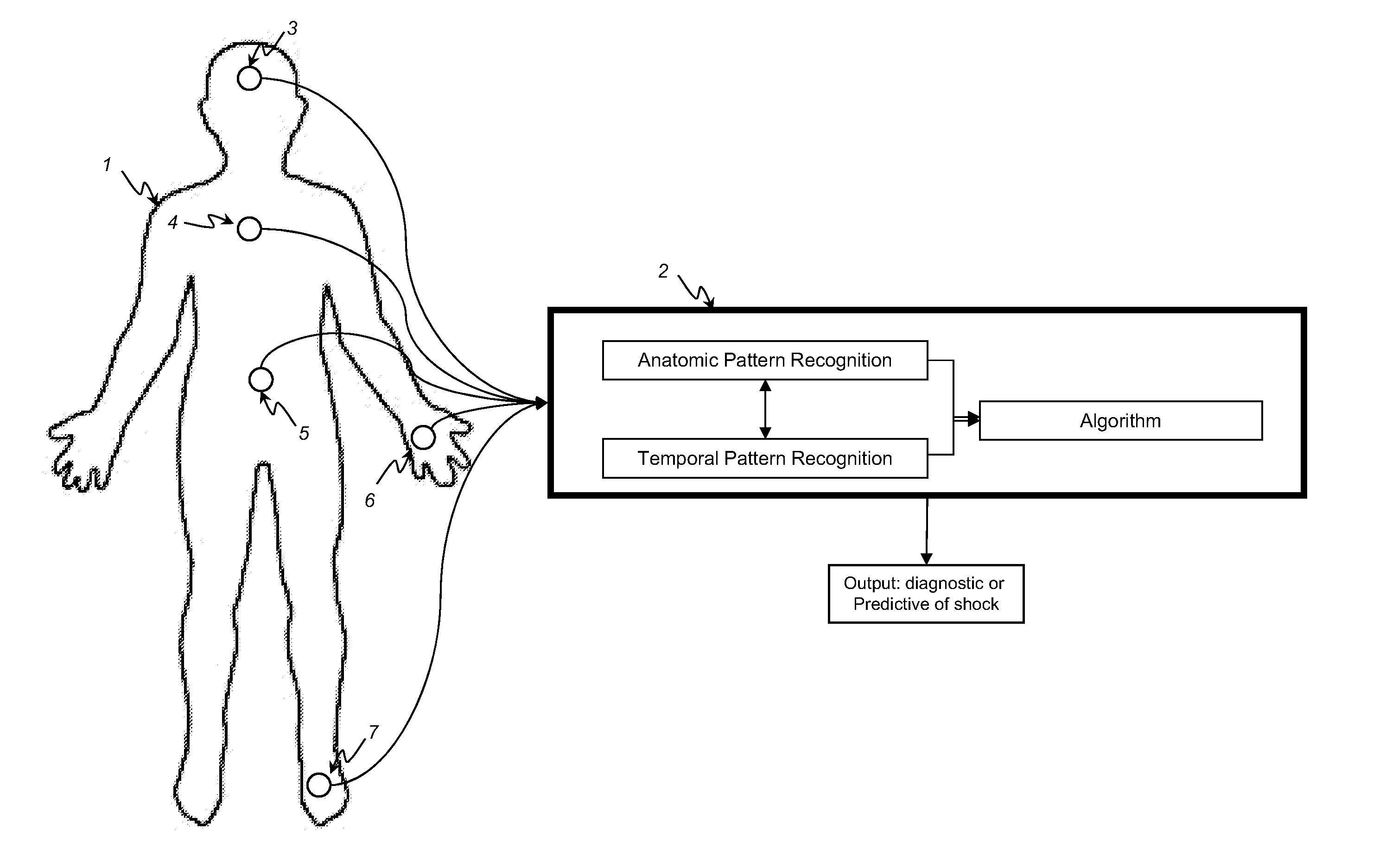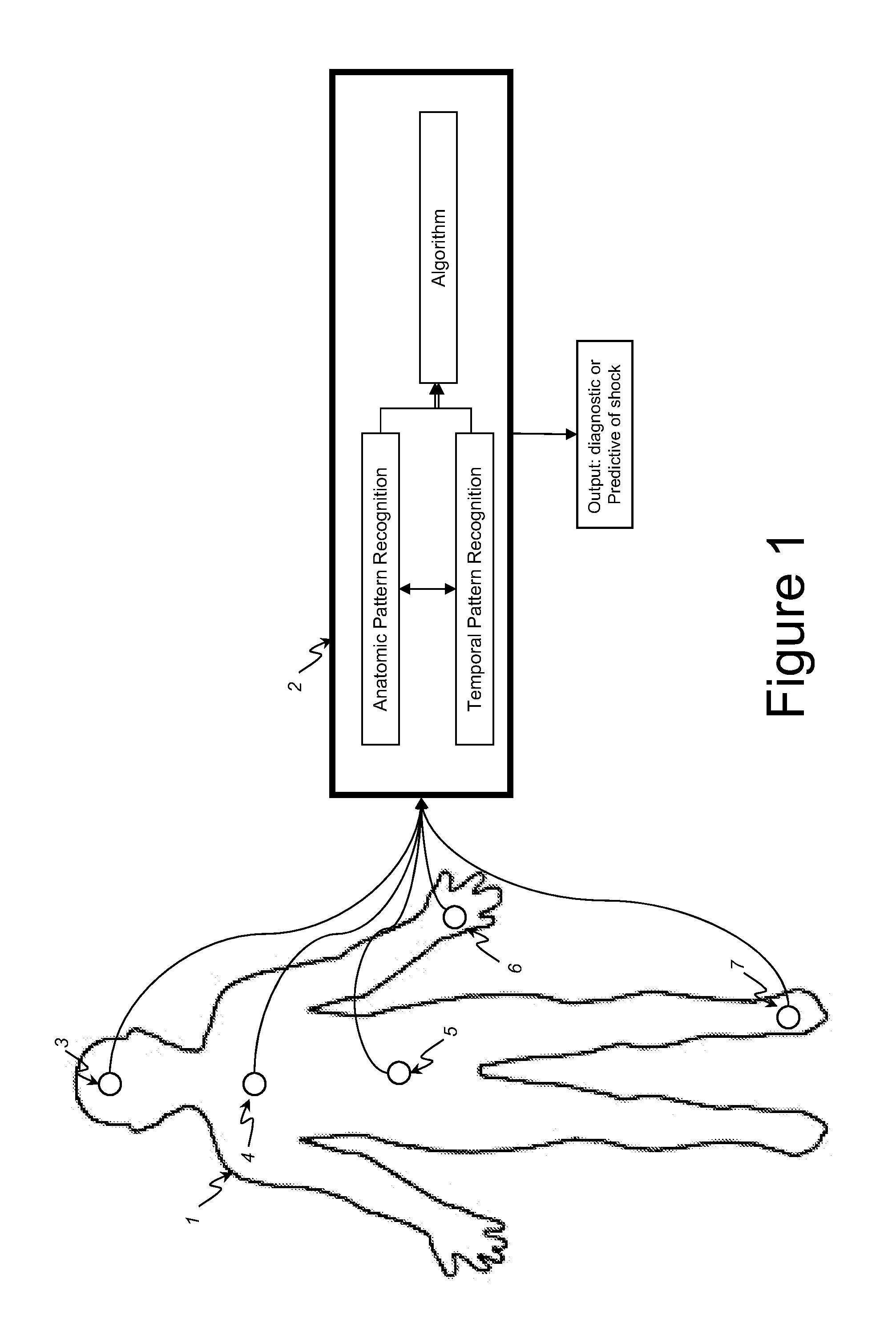Method for the discovery, validation and clinical application of multiplex biomarker algorithms based on optical, physical and/or electromagnetic patterns
a biomarker and multiplex technology, applied in the field of medical diagnostics, can solve the problems of insufficient delivery of oxygen and metabolic substrate, insufficient removal of waste products, insufficient measurement of tissue and organ parameters non-invasively, and significant inaccuracy of tissue and organ parameters measuremen
- Summary
- Abstract
- Description
- Claims
- Application Information
AI Technical Summary
Benefits of technology
Problems solved by technology
Method used
Image
Examples
Embodiment Construction
[0035]The present disclosure is for a system intended generally to predict the risk of, or assist in the diagnosis of, shock.
[0036]It will be appreciated that the present disclosure is for two components of the method:[0037]1) A method useful for diagnosing or predicting the risk of shock, the method incorporating an algorithmic combination of optical, electromagnetic, and other sensors, along with their anatomic and temporal patterns.[0038]2) A discovery method useful for developing the algorithms described in 1) through iterative optimization using machine learning.
A preferred implementation of the method used diagnostically:
Placement of sensors in a combination of physiologically distinct locations so as to obtain physiologically independent input data. Such locations would include a combination of: the cranium, the neck, the thorax, the abdomen, one or more extremities, among others.[0039]1. The combination of specific locations sensing would include the standard electrocardiogr...
PUM
 Login to View More
Login to View More Abstract
Description
Claims
Application Information
 Login to View More
Login to View More - R&D
- Intellectual Property
- Life Sciences
- Materials
- Tech Scout
- Unparalleled Data Quality
- Higher Quality Content
- 60% Fewer Hallucinations
Browse by: Latest US Patents, China's latest patents, Technical Efficacy Thesaurus, Application Domain, Technology Topic, Popular Technical Reports.
© 2025 PatSnap. All rights reserved.Legal|Privacy policy|Modern Slavery Act Transparency Statement|Sitemap|About US| Contact US: help@patsnap.com


